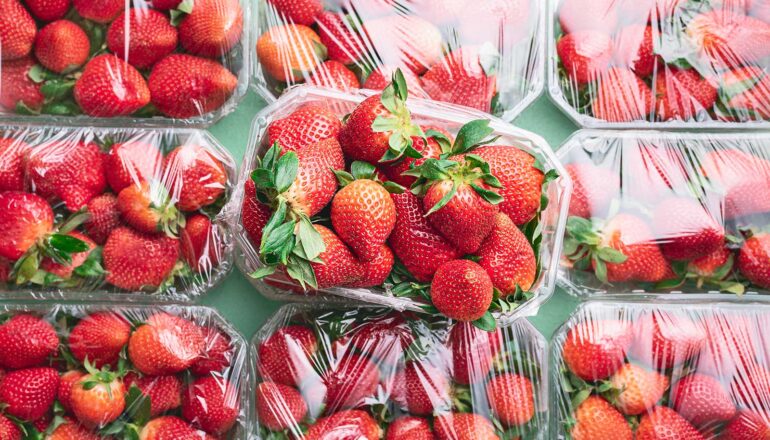Film made from natural stuff could replace plastic packaging
- Researchers at Georgia Institute of Technology have developed a biobased film made from natural ingredients like plants, mushrooms, and food waste that can replace traditional plastic packaging.
- The new film, composed of biodegradable components, rivals or exceeds the performance of conventional plastics in keeping food fresh and safe, even in hot and humid conditions.
- The film’s barrier technology consists of three primary components: a carbohydrate polymer for structure, a plasticizer to maintain flexibility, and a water-repelling additive to resist moisture.
- According to the researchers, the biobased film showed extremely low oxygen permeability and water vapor transmission, even at 80% relative humidity, matching or outperforming common plastics like poly(ethylene terephthalate) (PET) and poly(ethylene vinyl alcohol) (EVOH).
- The development of this technology offers a promising alternative to conventional plastics in packaging applications, with the potential to reduce environmental pollution for hundreds or even thousands of years.

Researchers have developed a biobased film that could replace traditional plastic packaging.
Plastic packaging is ubiquitous in our world, with its waste winding up in landfills and polluting oceans, where it can take centuries to degrade.
To ease this environmental burden, industry has worked to adopt renewable biopolymers in place of traditional plastics. However, developers of sustainable packaging have faced hurdles in blocking out moisture and oxygen, a barrier critical for protecting food, pharmaceuticals, and sensitive electronics.
Now, researchers at the Georgia Institute of Technology have developed a biologically based film made from natural ingredients found in plants, mushrooms, and food waste that can block moisture and oxygen as effectively as conventional plastics.
“We’re using materials that are already abundant in nature and degrade there to produce packaging that won’t pollute the environment for hundreds or even thousands of years,” says Carson Meredith, a professor in Georgia Tech’s School of Chemical and Biomolecular Engineering (ChBE@GT) and executive director of the Renewable Bioproducts Institute.
“Our films, composed of biodegradable components, rival or exceed the performance of conventional plastics in keeping food fresh and safe.”
Meredith’s research team has worked for more than a decade to develop environmentally friendly oxygen and water barriers for packaging. While earlier research using biopolymers showed promise, high humidity continued to weaken the barrier properties.
However, Meredith and his collaborators found a fix using a blend of these natural ingredients: cellulose (which gives plants their structure), chitosan (derived from crustacean-based food waste or mushrooms), and citric acid (from citrus fruits).
“By crosslinking these materials and adding a heat treatment, we created a thin film that reduced both moisture and oxygen transmission, even in hot, humid conditions simulating the tropics,” says lead author Yang Lu, a former postdoctoral researcher in ChBE@GT.
The barrier technology developed by the researchers consists of three primary components: a carbohydrate polymer for structure, a plasticizer to maintain flexibility, and a water-repelling additive to resist moisture. When cast into thin films, these ingredients self-organize at the molecular level to form a dense, ordered structure that resists swelling or softening under high humidity.
Even at 80% relative humidity, the films showed extremely low oxygen permeability and water vapor transmission, matching or outperforming common plastics such as poly(ethylene terephthalate) (PET) and poly(ethylene vinyl alcohol) (EVOH).
“Our approach creates barriers that are not only renewable, but also mechanically robust, offering a promising alternative to conventional plastics in packaging applications,” says Natalie Stingelin, professor and chair of Georgia Tech’s School of Materials Science and Engineering (MSE) and a professor in ChBE@GT.
The research team has filed for patent protection for the technology (patent pending).
The research appears in ACS Applied Polymer Materials.
The research was supported by Mars Inc., Georgia Tech’s Renewable Bioproducts Institute, and the US Department of Defense through the National Defense Science and Engineering Graduate Fellowship Program. Eric Klingenberg, a coauthor of the study, is an employee of Mars, a manufacturer of packaged foods.
Source: Georgia Tech
The post Film made from natural stuff could replace plastic packaging appeared first on Futurity.
